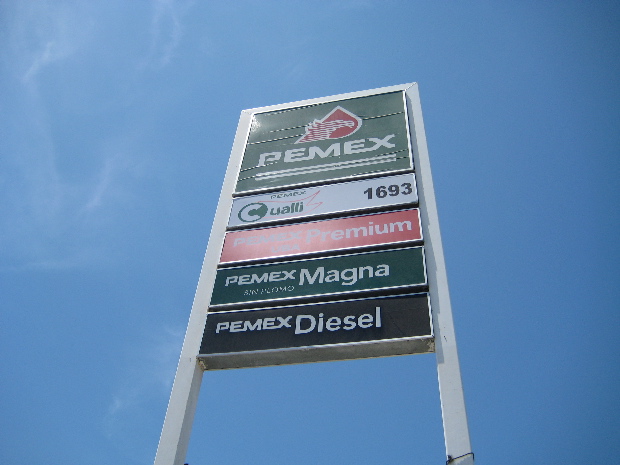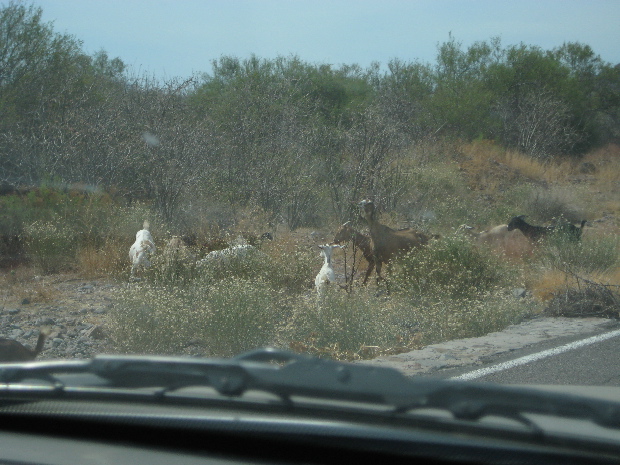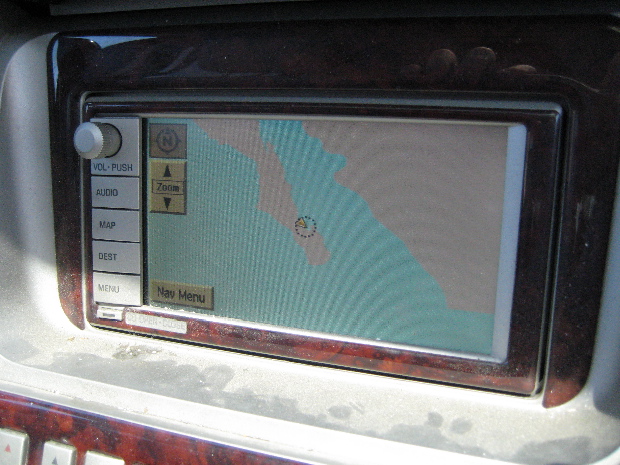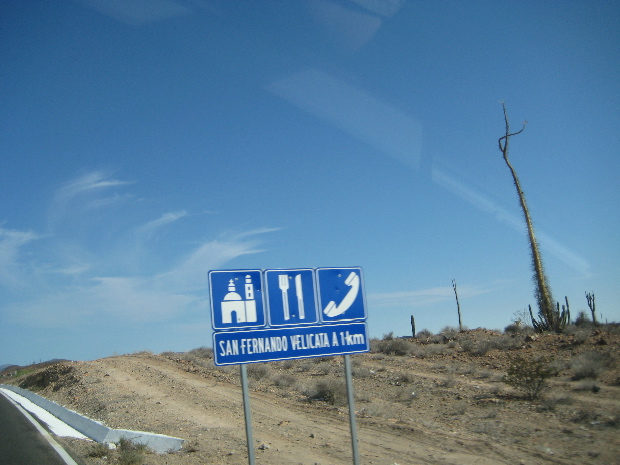
I recently came upon a term, “risk homeostasis”, which I think helps explain why driving in Mexico feels safer, and may in fact be safer, than driving in the U. S.
Roads and streets in Mexico tend not to be as well-maintained as they are in the States, lanes tend not to be as well marked (or respected when they are marked), traffic signs are treated very casually — in La Paz, many stop signs are completely obscured by foliage. (You quickly learn to come to a full stop at every bushy tree near the corner of an intersection.)
The result is that Mexicans are forced to drive with greater care, greater attention to the behavior and greater respect for the prerogatives of other drivers — not to mention pedestrians . . . and goats.

In the States, where road and street surfaces tend to be impeccable, lanes are clearly marked, traffic signs prominent and logically placed, livestock properly penned, people rely on these things to allow them to drive more carelessly — while talking on a cell phone, for example, with very little attention given to immediate traffic conditions around the vehicle. They assume that the markings and the rules will keep them out of accidents — but based on that assumption they feel free to expose themselves more to the hazards of unpredictable incidents.
This is “risk homeostasis”, a phenomenon observed in all security systems — people “consume” improvements in security and use them to justify taking more risks.

The result can be paradoxical. Here in the U. S., more pedestrians are killed in clearly marked crosswalks than in unmarked crosswalks — the bright white solid lines give them a false sense of security and lessen their attention to the actual behavior of drivers. (The GPS system in my car, above, has no detailed map data for Mexico — it only told me roughly where I was on the Baja California peninsula . . . all the rest I had to figure out for myself.)
My sister was terrified by the idea of driving in Mexico — because it all looked so anarchic. But it wasn’t anarchic at all — just the opposite. Almost all drivers were following one basic rule, which transcended all the other less basic rules — pay close attention to what your fellow drivers are doing and don’t run into them.

It’s the one basic rule that no improvements in traffic systems can
promote, and that many improvements in traffic systems can actually
undermine. It’s against the law in Mexico to drive while talking on a
cell phone — but it’s something you wouldn’t be likely to do anyway.
You wouldn’t feel safe. You may feel safe driving while talking on a
cell phone in the U. S., but you very likely aren’t.
By directing so much of your attention away from the traffic around
you, you have essentially “consumed” the advantages the U. S. road
system has over the Mexican road system.
For previous Baja California trip reports, go here.
[Photos © 2007 Harry Rossi]
